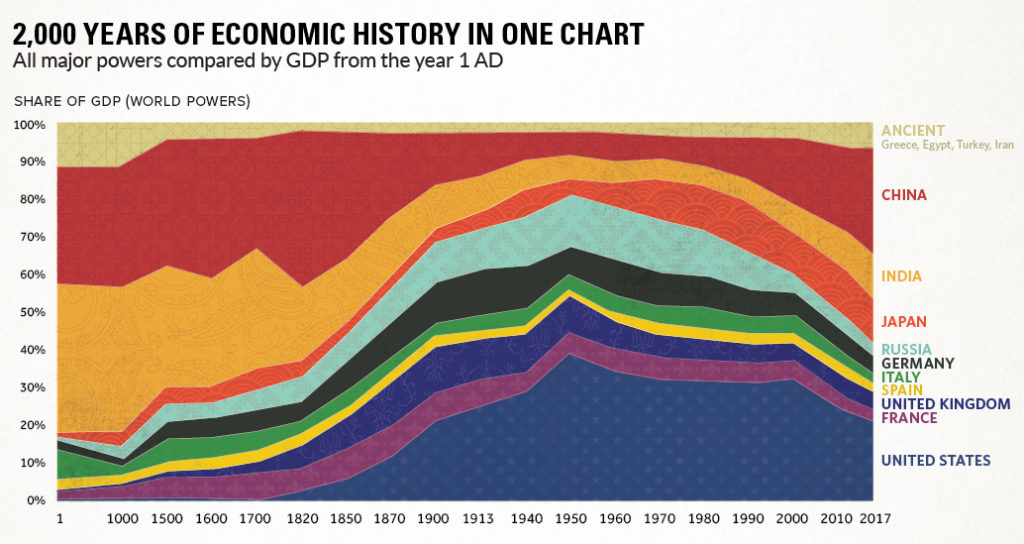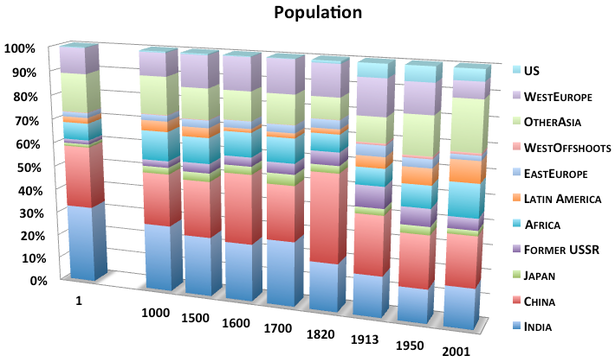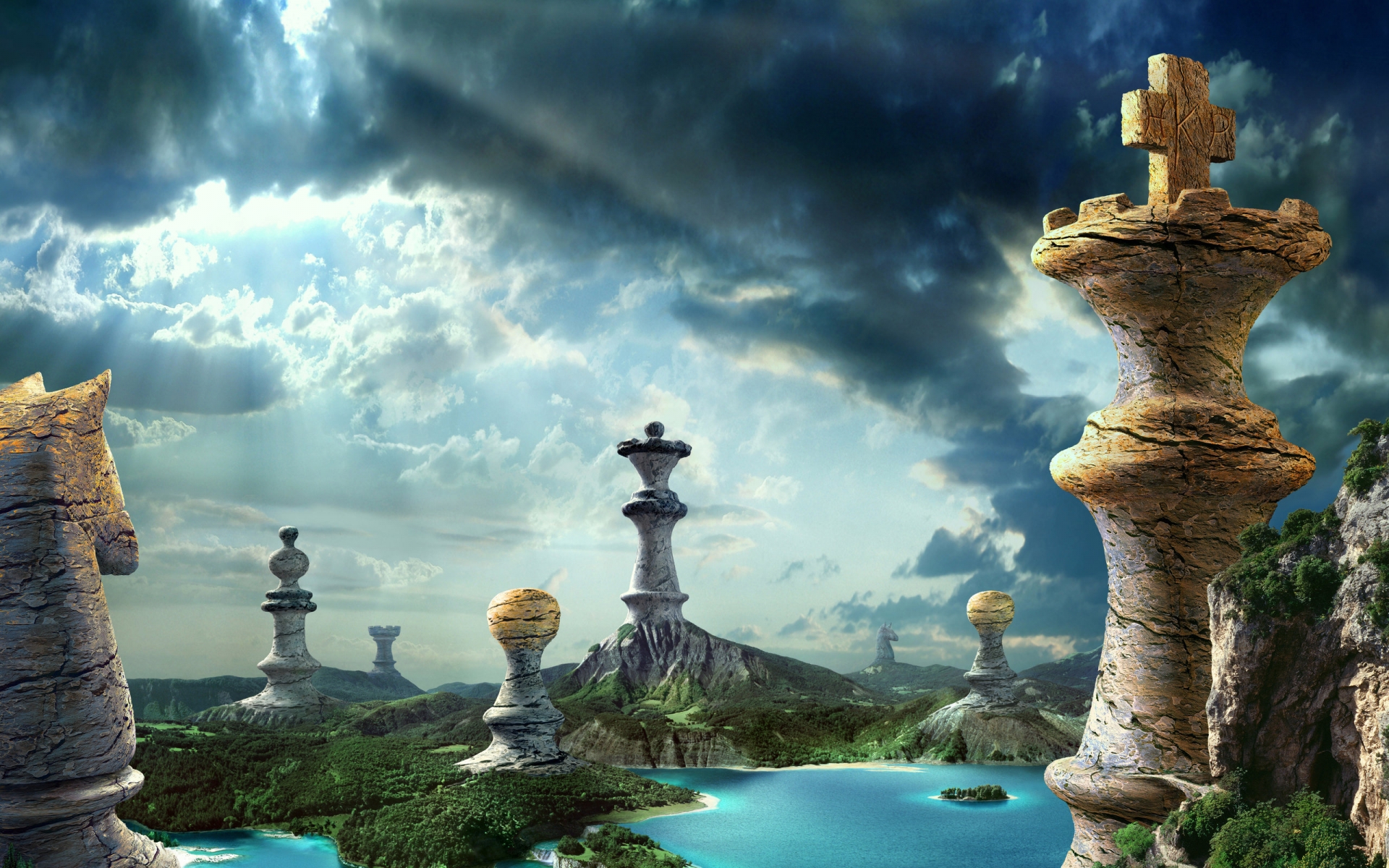If you have a spare hour, enjoy the video below in which I take you around the globe, summarizing the major positive and negative trends in today’s world. In 2018, I held this lecture for senior leaders of major corporations in Sydney and Melbourne (companies like Perpetual Limited, QBE, Deloitte, Karrikins Group, Oxford University Press, Worley Parsons and Pearson) in my role as Chief of Vision within World Vision Australia. This video was recorded by QBE in Sydney.
18 of the last 20 centuries China and India were the biggest economies

A quick look at the above chart and you may be surprised to see that China and India were by far the biggest economies in the first 18 of the last 20 centuries. Sure, it is all based on estimations and using different time intervals on the x-axis is actually not done. But nevertheless, we can draw some valuable insights from this chart.
Until 1800, economic progress was largely linear and linked to population growth. The more people, the bigger the share of GDP in the global economy. Hence the leading position of China and India. Already 2000 years ago, 60% of the world’s population lived in these two countries (thanks to a growing amount of tea, cotton and rice).

But then the Industrial Revolution changed the game altogether: suddenly, productivity started determining a country’s share of GDP in the world’s economy. Europe and the United States could produce way more wealth with their factories than the size of their population would indicate. It gave them a head start in economic power, which they unashamedly translated into military power. China and India faced severe humiliations from the West in the last 2 centuries.
But things are changing dramatically again. China and India are catching up, with China behaving like a petrol engine and India like a diesel engine (needing more time to warm up). The leverage of the West is diminishing, their head start disappearing. And this time, China and India can combine their industrial power with their immense population. Once both countries are ‘up to date’ and ‘up to scale’, their huge work force and internal market will allow them to go above and beyond. China may have reached this point already, India is on its way.
Once all of the catching up is done, we will see an economic world order that shouldn’t surprise anyone: a world order that existed already for 18 of the last 20 centuries and only got disrupted for 200 years.
